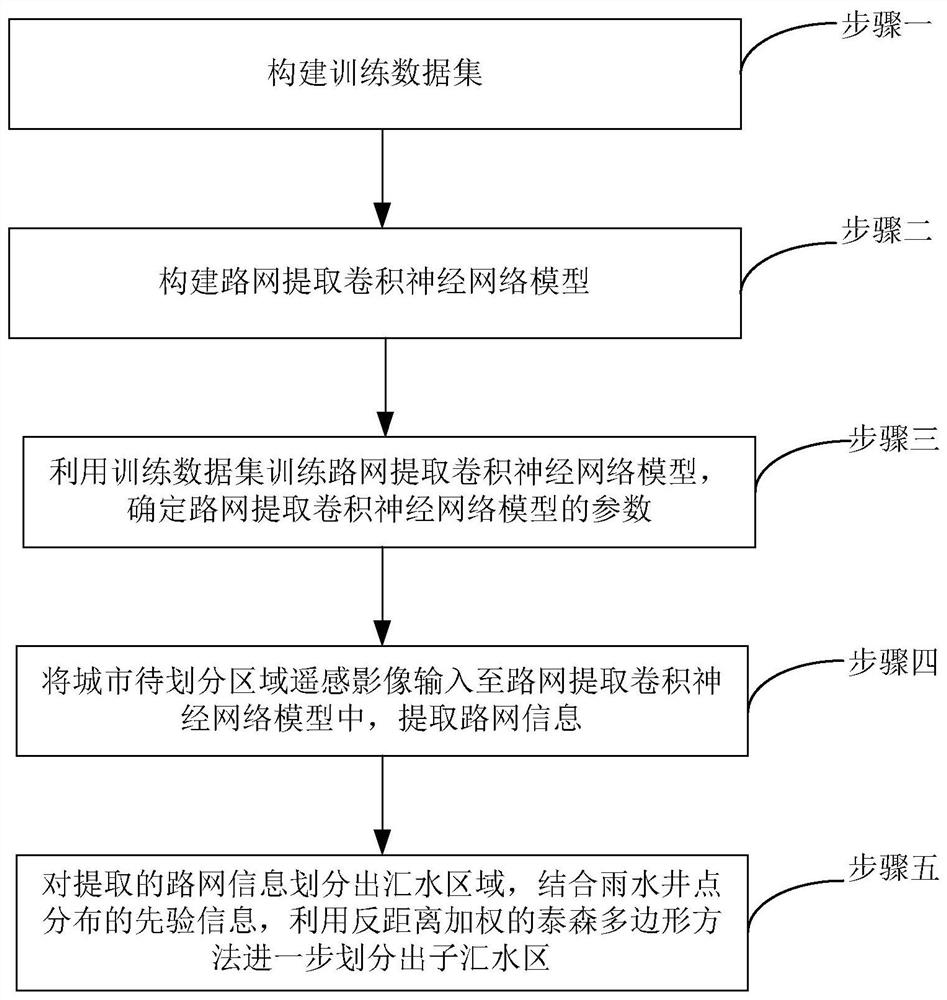Automatic division method for catchment area of urban drainage pipe network
A drainage pipe network and automatic division technology, applied in the direction of neural learning methods, biological neural network models, instruments, etc., can solve the problem of low efficiency of catchment area division, achieve division accuracy improvement, improve modeling efficiency, and accelerate modeling The effect of the process
- Summary
- Abstract
- Description
- Claims
- Application Information
AI Technical Summary
Problems solved by technology
Method used
Image
Examples
specific Embodiment
[0126] In a certain city A, the environment configuration uses an Intel(R) Core(TM) i9-9700K processor with a main frequency of 4.0GHz, a memory of 64GB, and an NVIDIA GTX 2080Ti graphics card with 11GB of video memory. The specific process is as follows:
[0127] Step 1. Image acquisition and preprocessing of the target area of city A:
[0128] Use the omnipotent map downloader to download the remote sensing image and road extraction layer of city A from Google Earth; use ArcGIS to vectorize the remote sensing image and road extraction layer of the same geographical location and crop them into 1024×1024 primitives;
[0129] The preprocessing includes: performing HSV contrast transformation and spatial geometric transformation data enhancement processing on the original remote sensing image of city A; cutting the enhanced remote sensing image of city A and the road extraction layer according to 1024×1024; performing binary value processing on the road extraction layer proce...
PUM
 Login to View More
Login to View More Abstract
Description
Claims
Application Information
 Login to View More
Login to View More - R&D
- Intellectual Property
- Life Sciences
- Materials
- Tech Scout
- Unparalleled Data Quality
- Higher Quality Content
- 60% Fewer Hallucinations
Browse by: Latest US Patents, China's latest patents, Technical Efficacy Thesaurus, Application Domain, Technology Topic, Popular Technical Reports.
© 2025 PatSnap. All rights reserved.Legal|Privacy policy|Modern Slavery Act Transparency Statement|Sitemap|About US| Contact US: help@patsnap.com



